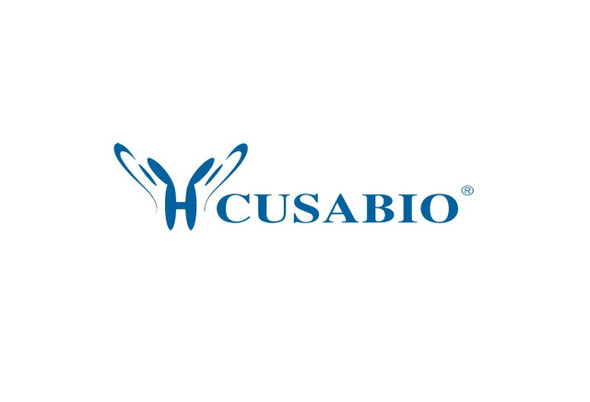Cusabio Escherichia coli Recombinants
Recombinant Escherichia coli Beta-lactamase TEM (bla) | CSB-EP352353ENL
- SKU:
- CSB-EP352353ENL
- Availability:
- 3 - 7 Working Days
Description
Recombinant Escherichia coli Beta-lactamase TEM (bla) | CSB-EP352353ENL | Cusabio
Alternative Name(s): IRT-4PenicillinaseTEM-1TEM-16/CAZ-7TEM-2TEM-24/CAZ-6TEM-3TEM-4TEM-5TEM-6TEM-8/CAZ-2
Gene Names: bla
Research Areas: Others
Organism: Escherichia coli
AA Sequence: HPETLVKVKDAEDQLGARVGYIELDLNSGKILESFRPEERFPMMSTFKVLLCGAVLSRVDAGQEQLGRRIHYSQNDLVEYSPVTEKHLTDGMTVRELCSAAITMSDNTAANLLLTTIGGPKELTAFLHNMGDHVTRLDRWEPELNEAIPNDERDTTMPAAMATTLRKLLTGELLTLASRQQLIDWMEADKVAGPLLRSALPAGWFIADKSGAGERGSRGIIAALGPDGKPSRIVVIYTTGSQATMDERNRQIAEIGASLIKHW
Source: E.coli
Tag Info: N-terminal 6xHis-SUMO-tagged
Expression Region: 24-286aa
Sequence Info: Full Length of Mature Protein
MW: 44.9 kDa
Purity: Greater than 90% as determined by SDS-PAGE.
Relevance: T-type are the most prevalent beta-lactamases in enterobacteria; they hydrolyze the beta-lactam bond in susceptible beta-lactam antibiotics, thus conferring resistance to penicillins and cephalosporins. T-3 and T-4 are capable of hydrolyzing cefotaxime and ceftazidime. T-5 is capable of hydrolyzing ceftazidime. T-6 is capable of hydrolyzing ceftazidime and aztreonam. T-8/CAZ-2, T-16/CAZ-7 and T-24/CAZ-6 are markedly active against ceftazidime. IRT-4 shows resistance to beta-lactamase inhibitors.
Reference: Beta-lactamase TEM1 of E. coli. Crystal structure determination at 2.5-A resolution.Jelsch C., Lenfant F., Masson J.-M., Samama J.-P.FEBS Lett. 299:135-142(1992)
Storage: The shelf life is related to many factors, storage state, buffer ingredients, storage temperature and the stability of the protein itself. Generally, the shelf life of liquid form is 6 months at -20?/-80?. The shelf life of lyophilized form is 12 months at -20?/-80?.
Notes: Repeated freezing and thawing is not recommended. Store working aliquots at 4? for up to one week.
Function: TEM-type are the most prevalent beta-lactamases in enterobacteria; they hydrolyze the beta-lactam bond in susceptible beta-lactam antibiotics, thus conferring resistance to penicillins and cephalosporins. TEM-3 and TEM-4 are capable of hydrolyzing cefotaxime and ceftazidime. TEM-5 is capable of hydrolyzing ceftazidime. TEM-6 is capable of hydrolyzing ceftazidime and aztreonam. TEM-8/CAZ-2, TEM-16/CAZ-7 and TEM-24/CAZ-6 are markedly active against ceftazidime. IRT-4 shows resistance to beta-lactamase inhibitors.
Involvement in disease:
Subcellular Location:
Protein Families: Class-A beta-lactamase family
Tissue Specificity:
Paythway:
Form: Liquid or Lyophilized powder
Buffer: If the delivery form is liquid, the default storage buffer is Tris/PBS-based buffer, 5%-50% glycerol. If the delivery form is lyophilized powder, the buffer before lyophilization is Tris/PBS-based buffer, 6% Trehalose, pH 8.0.
Reconstitution: We recommend that this vial be briefly centrifuged prior to opening to bring the contents to the bottom. Please reconstitute protein in deionized sterile water to a concentration of 0.1-1.0 mg/mL.We recommend to add 5-50% of glycerol (final concentration) and aliquot for long-term storage at -20?/-80?. Our default final concentration of glycerol is 50%. Customers could use it as reference.
Uniprot ID: P62593
HGNC Database Link: N/A
UniGene Database Link: N/A
KEGG Database Link: KEGG
STRING Database Link: N/A
OMIM Database Link: N/A









